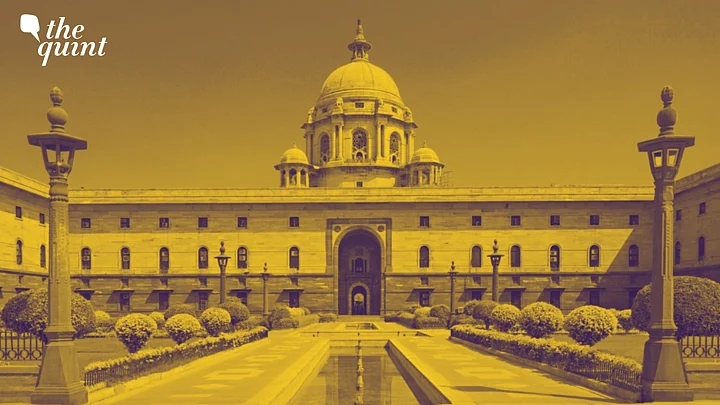With the tenure of incumbent president Ram Nath Kovind coming to an end on 24 July, political parties have begun strategising over the next presidential candidate for the polls to be conducted on 18 July.
Although the Bhartiya Janata Party (BJP), as well as the Opposition parties, have been tight-lipped about their nominees and have made no official announcement, several names have surfaced for the post.
In the Opposition parties' meeting that was held on Wednesday, several names, including Farooq Abdullah and Gopal Krishna Gandhi, were discussed. Soon after the meeting concluded, the Opposition's popular choice, Sharad Pawar, took to Twitter to "humbly deny" the candidature.
But even if the Opposition chooses a candidate, will the numbers stack up in their favour? Let's take a look at the figures:
How the Numbers Stacked Up in 2017
Let's understand the math of the presidential election from the contest of 2017. Ram Nath Kovind defeated Meira Kumar to become the 15th president of India in 2017. Kovind secured 7,02,000 votes out of a total of 10,69,358 while Kumar could only garner 3,67,000 votes.
In 2017, the Electoral College comprised 4,896 members, which included 233 Members of Parliament (MPs) in the Rajya Sabha, 543 in the Lok Sabha, and 4,120 members of State Legislative Assemblies (MLAs).
How Is the Calculation Done?
The President in India is elected through a system of proportional representation utilising a single transferable vote system and secret ballots. Elected MPs and MLAs form the Electoral College for the election, while the value of a vote for each state is based on the population.
For example, Uttar Pradesh (UP) has 403 MLAs and the population of the state as per the 1,971 Census is 8,38,49,905. When the population of the state is divided by the number of MLAs and then divided by 1,000, it results in 208 – which is considered the value of the vote of an MLA from UP.
The total value of votes of 403 MLAs from UP is calculated to be 83,824. When the value of votes of MLAs of all states is added, it becomes 5,49,495.
Weightage of Vote of an MP
The 545 MPs from Lok Sabha and 233 MPs from Rajya Sabha form the Electoral College of 766 MPS for the presidential election. The 13 nominated members of the Rajya Sabha are not a part of it.
The total value of the MPs' votes must equal the total value of the MLAs in order to maintain the State and the Union balance.
Thus, when the total value of MLAs' vote is divided by the total number of MPs in the Electoral College, i.e. 766, the value of the vote of an MP turns out to be 708. Therefore, the total value of the vote of the MPs is 5,49,408.
In the 16th Presidential Election, the value of the vote of MLAs is 5,43,231 and that of the MPs is 5,43,200. This brings the total value of votes of the Electoral College in 2022 to 10,86,431.
BJP Has Lost Some Vote Value Since 2017
The ruling BJP and its allies constitute 48 percent of the Electoral College with a vote value of 10.86 lakh. The majority mark is at 5.43 lakh while BJP and its allies hold 5.26 lakh votes.
In 2017, NDA had secured 7,02,044 votes for its candidate but now the total value of its votes stands at 5.26 lakh, which is lesser than the previous election, and a bit short of the magic mark. The drop in votes is due to the loss of allies by the BJP, including the Shiv Sena and Akali Dal.
The party has also lost seats in Rajasthan, Madhya Pradesh, and Chhattisgarh after 2017.
What Is BJP's Plan?
The BJP may rope in a helping hand from Biju Janata Dal (BJD) from Odisha, Yuvajana Sramika Rythu Congress Party (YSRCP) from Andhra Pradesh, or All India Anna Dravida Munnetra Kazhagam (AIADMK) from Tamil Nadu.
Navin Patnaik and Jagan Mohan Reddy have already met Prime Minister Narendra Modi in New Delhi. It is expected that these parties would support the NDA candidate in the presidential election as they did in 2017.
Opposition Looks for a Suitable Candidate
The total value of votes of the Congress, Shiv Sena, Rashtriya Janata Dal (RJD), and Nationalist Congress Party (NCP) is 2.59 lakhs. But the other parties such as the Trinamool Congress, Aam Aadmi Party (AAP), and the Left holds around two lakh votes.
Even if the divided Opposition cobbles up a joint strategy and a candidate, it is highly likely that BJP is going to sail through with its candidate with the support of smaller regional parties.
Earlier, the name of Maratha satrap Sharad Pawar was floated as the Opposition candidate but he made his stand clear in a meeting of NCP leaders. On the other hand, Nitish Kumar said on camera that he was not a candidate in the presidential election. Thus, it appears that the 'Band, Baja, Barat' is ready, and the Opposition just has to find a willing bridegroom.
